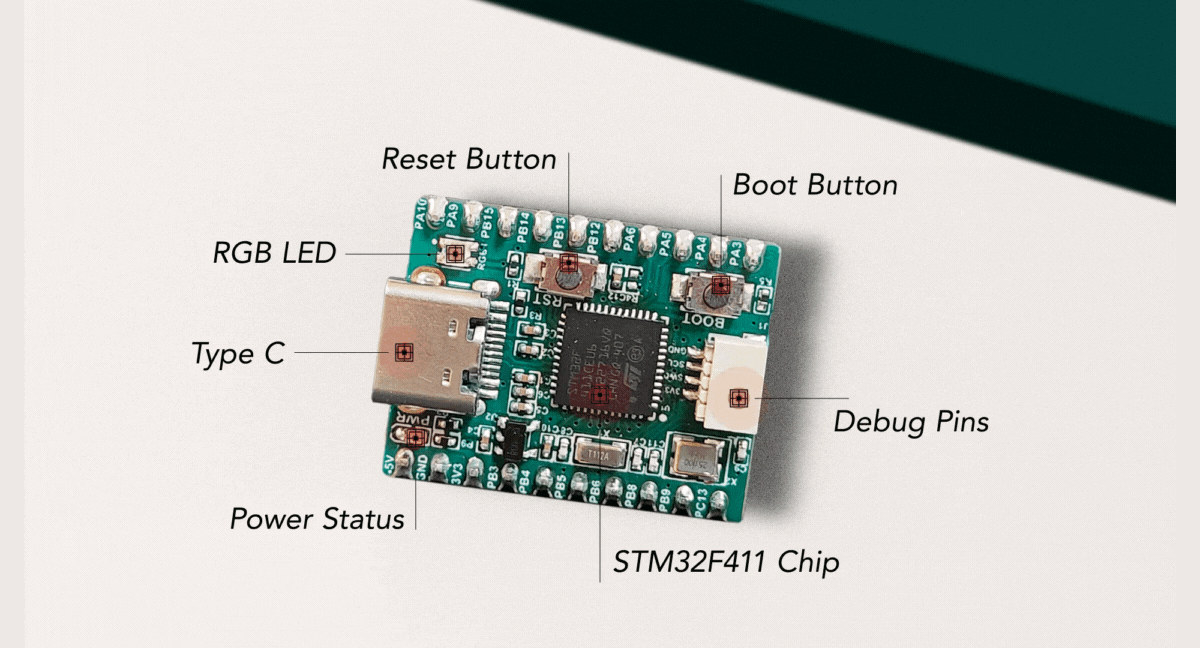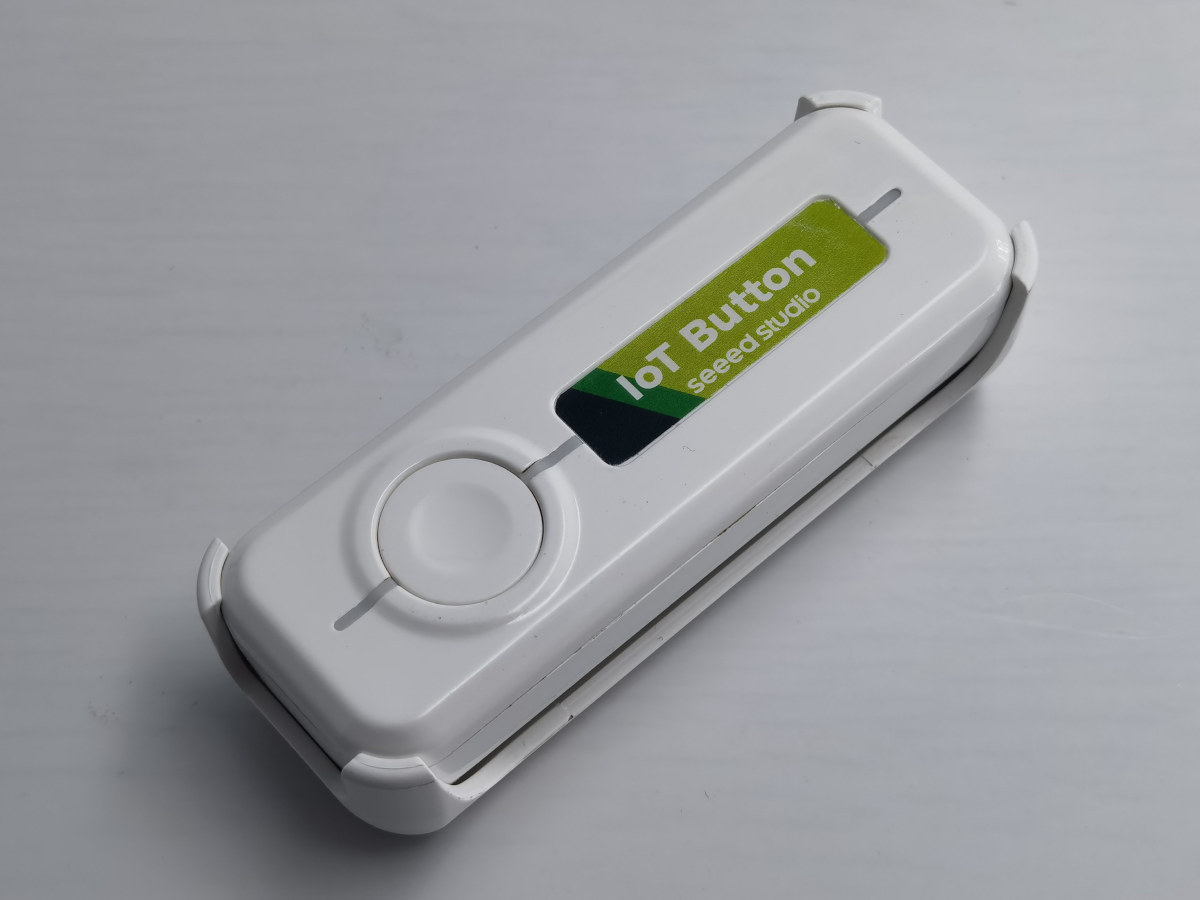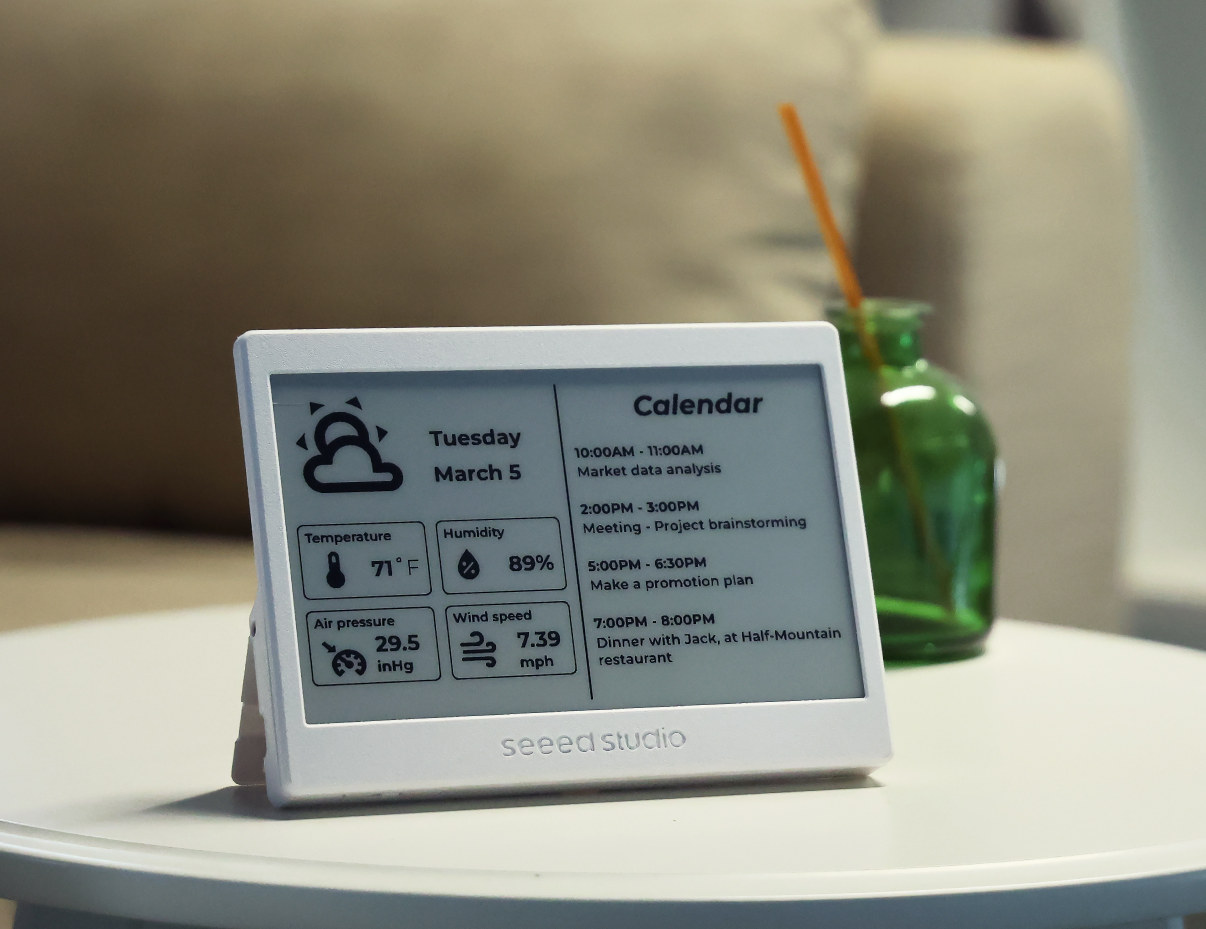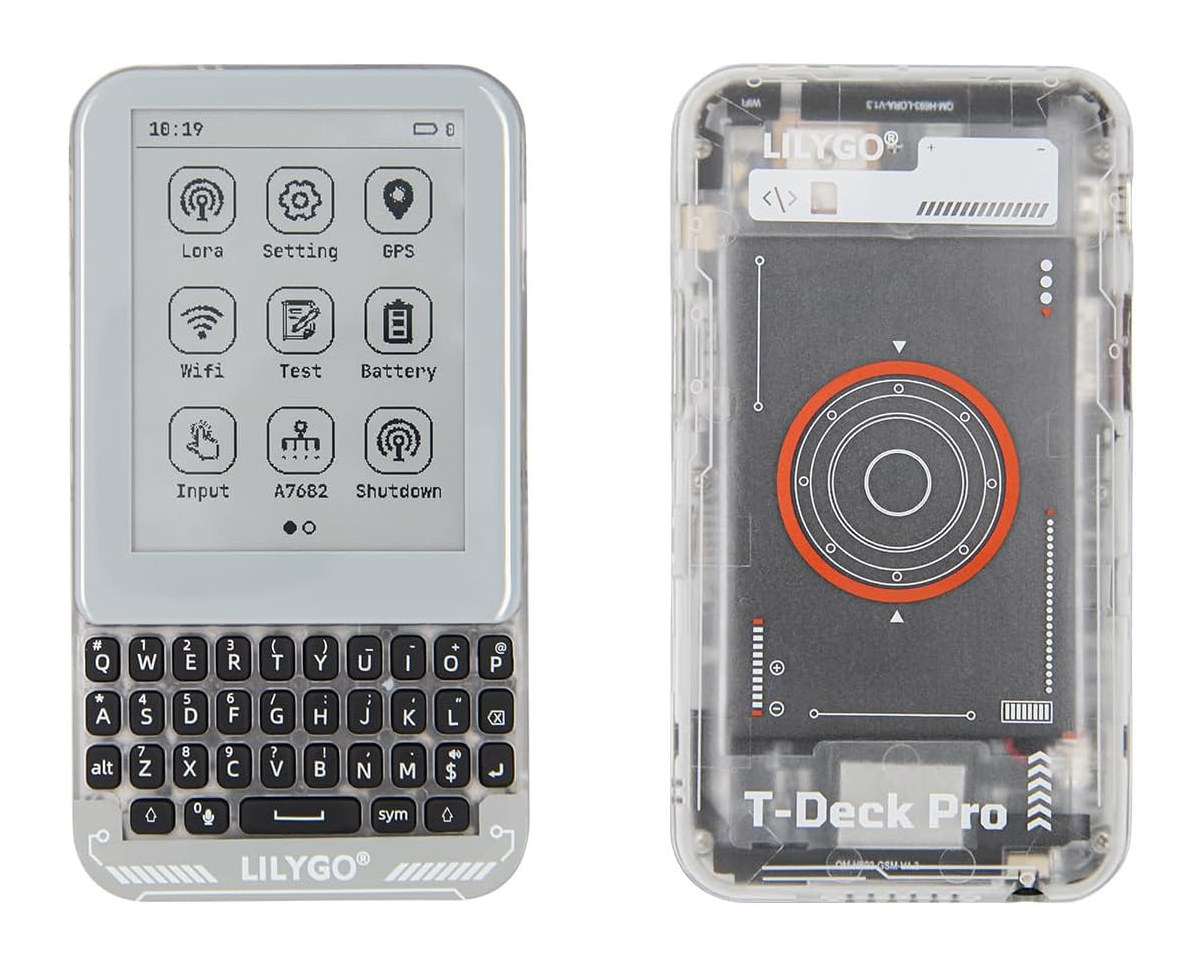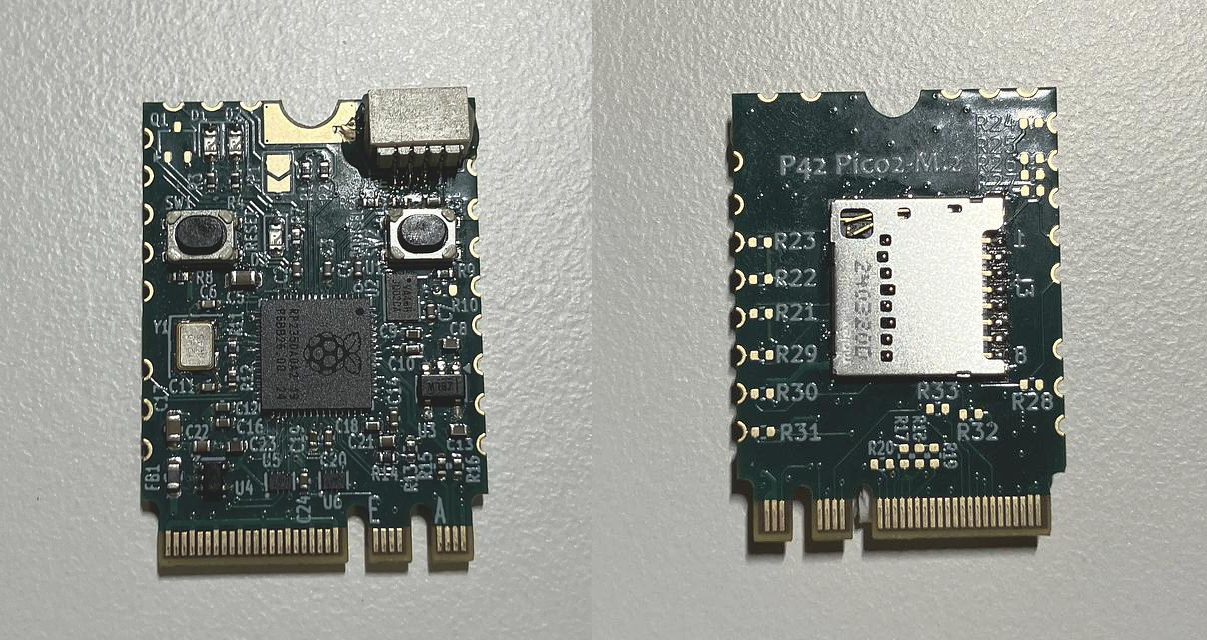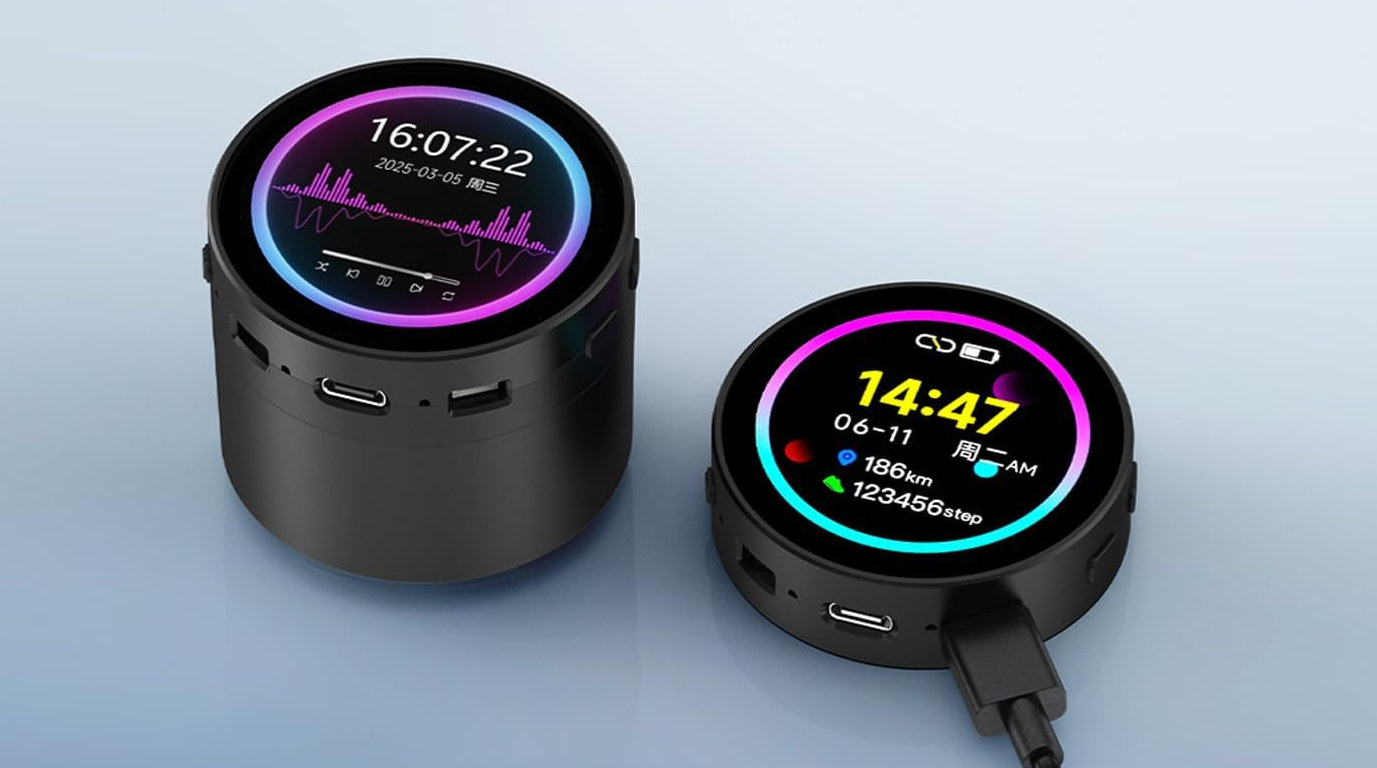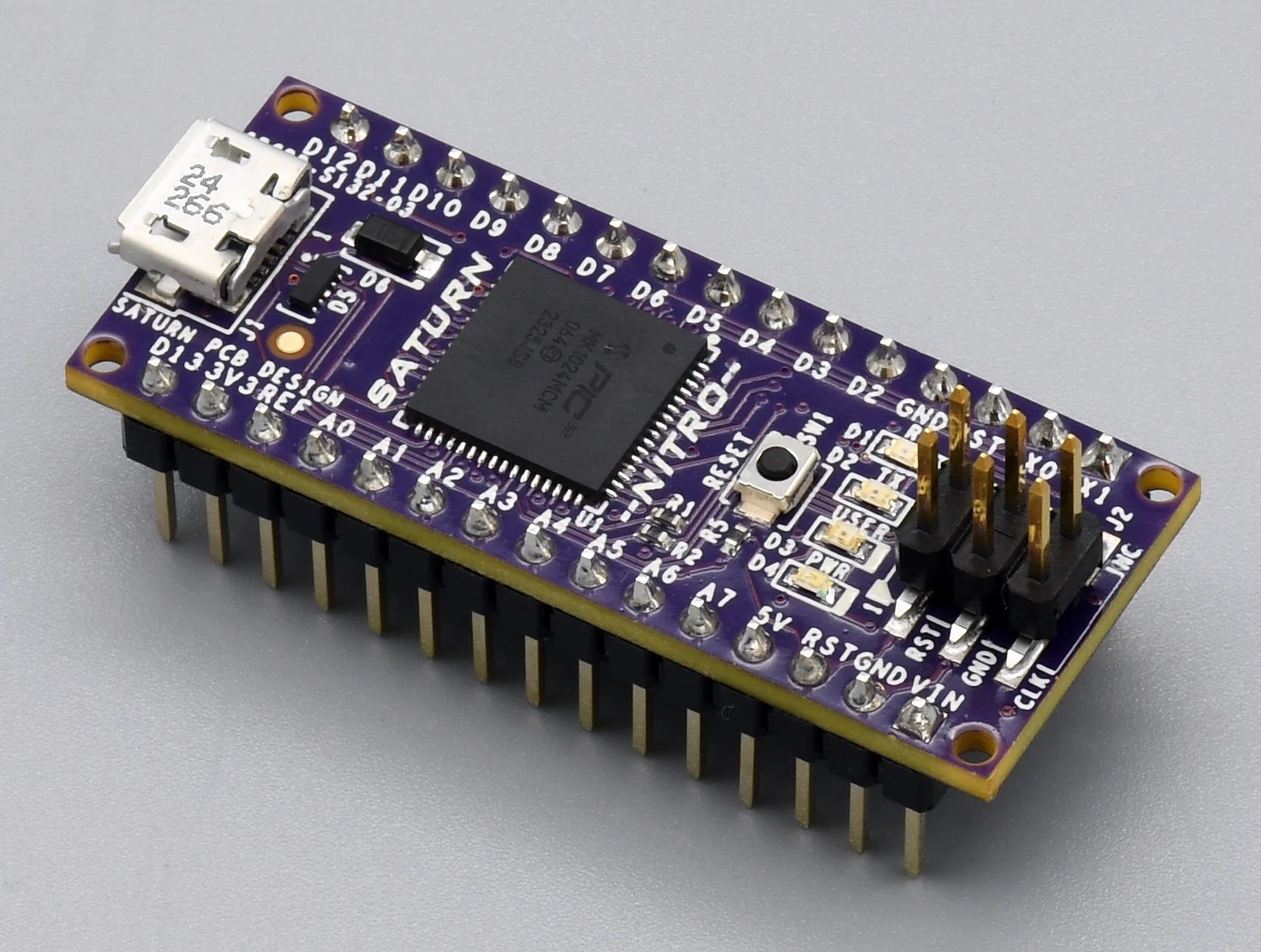Xero MCU is a small STMicro STM32F411 Arm Cortex-M4F microcontroller board with a USB-C port, twenty through and castellated holes for GPIOs, a Debug connector, Reset and Boot buttons, and a few LEDs. The 100 MHz MCU embeds 512KB flash and 128KB SRAM, and the board is said to be designed for hobbyists, students, and professionals. For reference, the Xero MCU board features the same STM32F411CEU6 microcontroller found in the Black Bill board. However, it’s quite shorter at about half the size, and features castellated edges, making it suitable for soldering on a baseboard. Xero MCU specifications: Microcontroller – STMicro STM32F411CEU6 Arm Cortex-M4F MCU @ 100MHz with 512KB Flash, 128KB SRAM USB – 1x USB Type-C port for power and programming Expansion – 2x 20-pin through and castelled holes with up to 17x GPIO, I2C, 2x SPI, 2x UART, 4x ADC, 5V, 3.3V, and GND Debugging – 4-pin debug connector […]
Battery-powered Seeed Studio IoT Button features ESP32-C6 SoC, supports ESPHome or Zigbee firmware
Seeed Studio IoT Button is an inexpensive ESP32-C6 button powered by a rechargeable 18650 battery and designed to easily and quickly control Smart Home devices over WiFi 6 or Zigbee wireless protocol. It will be especially handy to Home Assistant users since the device is pre-flashed with ESPHome firmware for easy integration (over WiFi), and the company also provides a Zigbee firmware for Zigbee Home Assistant (ZHA) integration. The hardware is pretty basic with a button, three LEDs, and a USB-C port for charging the replaceable 18650 battery. Seeed Studio IoT Button specifications: SoC – ESP32-C6FH4 CPU Single-core 32-bit RISC-V clocked up to 160 MHz Low-power RISC-V core @ up to 20 MHz Memory – 512KB SRAM, 16KB low-power SRAM Storage – 320KB ROM, 4MB flash Wireless – 2.4 GHz WiFi 6, Bluetooth 5.0 LE/Mesh (somehow not used here), 802.15.4 radio for Zigbee 3.0 and Thread. Matter compatible. USB – […]
T-Pico-2350 is a fully integrated devkit with Raspberry Pi RP2350, ESP32-C6, 2.33-inch color touchscreen display, and HDMI video output
LILYGO T-Pico-2350, also called the T-Pico2, is a fully enclosed devkit based on Raspberry Pi RP2350 MCU, an ESP32-C6 SoC for wireless connectivity, a 2.33-inch capacitive color touchscreen display, and an HDMI (DVI) video output port. The design is an update to the T-PicoC3 introduced in 2022 with the case design of the T-Display S3 Pro, and the devkit also features a microSD card slot, a USB-C port for power and programming, two GPIO headers, a 13-pin GPIO FPC connector, two Qwiic I2C/UART connectors, and a PMU for battery management. T-Pico-2350 specifications: Microcontroller – Raspberry Pi RP2350A CPU Dual-core Arm Cortex-M33 @ 150 MHz with Arm Trustzone, Secure boot OR Dual-core RISC-V Hazard3 @ 150 MHz Up to two cores can be used in any combination Memory – 520 KB on-chip SRAM Storage 16MB SPI flash connected to RP2350 MicroSD card slot Display – 2.33-inch color IPS LCD (ST7796S SPI […]
Seeed Studio XIAO 7.5″ ePaper panel supports ESPHome firmware, Arduino programming
Seeed Studio XIAO 7.5″ ePaper Panel interfaces an XIAO ESP32-C3 USB-C board and mainly targets the Smart Home market with support for ESPHome, but the monochrome ePaper display is also programmable with the Arduino IDE for a wider range of applications. The display offers a resolution of 800×400 and includes a 2,000mAh battery good for three months per charge with updates every 6 hours. Seeed Studio says the display can operate in the -40°C to 85°C temperature range, so it would be suitable for outdoor use as long as it’s not exposed to rain or dust. The USB-C port of the ESP32-C3 module and the Boot and Reset buttons are easily accessible for charging the display and programming it. XIAO 7.5″ ePaper Panel specifications: Wireless module – XIAO ESP32C3 SoC – Espressif Systems ESP32-C3 CPU – Single-core RISC-V microcontroller @ 160 MHz Memory/Storage – 400KB SRAM, 384KB ROM, 4MB flash […]
LILYGO T-Deck Pro – An ESP32-S3 LoRa messenger with e-paper touch display, keyboard, and 4G LTE or audio codec option
LILYGO T-Deck Pro is a LoRa messenger based on an ESP32-S3 WiFi 4 and Bluetooth 5.x SoC, and offered with a 3.1-inch e-paper display with touchscreen, a Blackberry-like QWERTY keyboard, a GPS module, speaker, microphone, and a 3.5mm audio, as well as IMU and light sensors. It builds upon the T-Deck Plus design, but replacing the 2.8-inch IPS display with a 3.1-inch e-paper display allows for a slimmer design and should offer longer battery life despite the smaller 1,400 mAh battery used in the new model. Two versions of the T-Deck Pro are available: one with a Simcom 4G LTE modem and a cheaper one with a PCM5102A audio codec. LILYGO T-Deck Pro specifications: SoC – ESP32-S3FN16R8 CPU – Dual-core Tensilica LX7 microcontroller @ up to 240 MHz 2.4 GHz 802.11n WiFi 4 and Bluetooth 5.0 LE connectivity Memory – 8MB PSRAM Storage – 16MB SPI flash Storage – MicroSD card […]
P42 Pico2 M.2 – A Raspberry Pi RP2350 board in M.2 form factor
The P42 Pico2 M.2 may look like an M.2 module, but it’s actually a Raspberry Pi RP2350 development board in M.2 2230 form factor whose edge connector exposes USB, UART, I2C, and control I/Os. The board ships with a 2MB SPI flash and complies with voltage levels defined by the M.2 specification, with some of the interfaces running on 1.8 V. The SWD interface, +3.3 V, GND, and 16 IOs are accessible on castellated pins, and there’s also a QWIIC connector for I2C modules, but it’s not populated by default. The board also comes with a microSD card slot on the bottom and the usual Reset and BOOT buttons. P42 Pico M.2 specifications: SoC – Raspberry Pi RP2350A CPU Dual-core Arm Cortex-M33 @ 150 MHz with Arm Trustzone, Secure boot OR Dual-core RISC-V Hazard3 @ 150 MHz Up to two cores can be used in any combination Memory – 520 […]
ESP32-S3 Smart Audio devkit integrates 1.8-inch round touch LCD, microphone, optional battery and speaker box
Waveshare ESP32-S3-Touch-LCD-1.85C is an ESP32-S3 development kit with a 1.85-inch round touchscreen display with 360×360 resolution, support for Wi-Fi & Bluetooth BLE 5, and a built-in microphone. There’s also the ESP32-S3-Touch-LCD-1.85C-BOX with the same specifications, but an additional box with a speaker and a 3.7V battery. Both versions come with 16MB SPI flash, a microSD card slot, a USB-C port, a few buttons, GPIO and I2C expansion headers, and can be used as music players, smart speakers, HMI solutions, etc… It’s not quite the first ESP32-S3 audio + display devkit we’ve covered, as Waveshare introduced the ESP32-S3-Touch-AMOLED-1.8 earlier this year with a squared AMOLED display, and Wireless Tag launched the ESP32 Agent Dev Kit to interface with LLMs. ESP32-S3-Touch-LCD-1.85C specifications: SoC – Espressif ESP32-S3R8 CPU – Dual-core Tensilica LX7 microcontroller up to 240 MHz with vector instructions for AI acceleration Memory – 8MB PSRAM Wireless – WiFi 4 and Bluetooth […]
SATURN NITRO – A Microchip PIC32MK development board with Arduino Nano form factor
While Microchip regularly releases PIC32 microcontrollers and evaluation kits, we don’t see that many PIC32 development boards from third parties. The SATURN NITRO is an exception, and the Arduino Nano-inspired development board is equipped with a 120 MHz PIC32MK general-purpose and motor control 32-bit MIPS microcontroller with 256KB SRAM, 1024KB flash, and 4KB EEPROM. The board closely follows the design of the official Arduino Nano board and can be seen as a beefed-up version with a much more powerful microcontroller delivering 198 DMIPS compared to the Microchip ATmega328P 8-bit microcontroller @ 16 MHz with just 2KB SRAM, 32 KB flash, and 1KB EEPROM, and a less capable I/Os. SATURN NITRO specifications: MCU – Microchip PIC32MK1024MCM064 Core – MIPS32 microAptiv MCU core @ 120 MHz with FPU; up to 198 DMIPS Memory – 256 KB SRAM Storage – 1MB flash, 4KB EEPROM USB – 1x Micro USB OTG port also used […]


